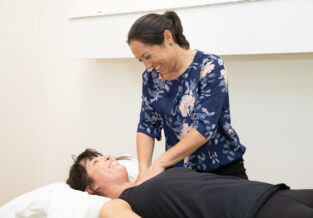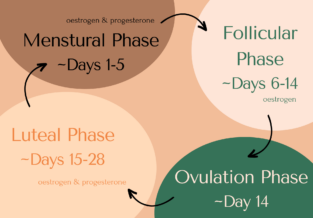Your “Hour of Power” at the Gym is Not Enough!
Published on
05 Jun 2017

Call us on: (03) 9975 4133
It's a well known fact that we should all be fitting in our 30 minutes of exercise a day, but do you understand the importance of regular breaks throughout your workday? Jacinda Cheong explains why we need to focus more on taking the time to get up from behind the desk!
You’re a modern day desk jockey where your Fitbit accounts for all the steps you take walking to and from work … you might even be a notch above that and be what most would call a “Weekend Warrior”- competing in local endurance events, training on most, if not all days of the week in the gym, on a bike or pounding the pavement.
Either way, you would consider yourself fit and healthy and you’re satisfied that by accumulating AT LEAST 30 minutes of moderate intensity exercise a day*, you bank in all the health benefits associated with having an “active lifestyle” despite the fact that you sit at a desk all day for work.
* Current ACSM/AHA recommendations for exercise
But what if I told you that you’re still at risk of developing cardiovascular disease and diabetes because of your sedentary lifestyle?
Sitting Consequences
Unfortunately, exercising does not work like a savings account. You can’t save the time you’ve exercised to pay for all that time you sit.
Those who exercise can still very much be classed as sedentary and research has shown that independent of any time you spend exercising, if you sit for prolonged periods you’re increasing your risk of developing cardio-metabolic issues (heart disease and diabetes), as well as weight gain, obesity and premature mortality ([1-4]. Fatigue and lower back discomfort are also associated with prolonged sitting [5].
The Obvious Facts:
Studies have indicated that most of us think issues associated with fatigue, lack of productivity and musculoskeletal pain or stiffness are why we think sitting is bad for our health [6]
These only create incidental breaks in our sitting and are some obvious reasons for why we move but we need to be driven by a bigger picture and understand the REAL need to be getting up regularly.
The Not-So-Obvious Facts:
Two recent studies conducted in New Zealand and Australia have found that regular activity breaks from sitting actually help to reduce the levels of glucose and insulin that can be present in your blood stream after eating. [1, 2].
Muscular activity has also been proposed to increase the activity of an enzyme (lipoprotein lipase) which is necessary for the metabolism of lipid or fats in your body [4]. High blood glucose and lipids are both risk factors for developing diabetes and cardiovascular disease [7, 8]
Both of these studies showed that getting up every 20-30 minutes and walking between 1:40 and 2 minutes was sufficient to have an affect [1, 2]. While more research is necessary to find the optimal frequency and duration of these activity breaks, the message is clear- Sit. Stand. Move. Repeat!
Useful But Very Easy Things to Implement:
- Set an alarm to get up every hour
- Change the location of your printer and waste paper basket so you have to get up
- Interact the old fashion way, meet face to face instead of phone calls, emails or texts
- Try standing or walking meetings
- Use the bathroom on another floor in the office and use the stairs to get there
- Drink from a glass rather than a bottle so you have to get up regularly to refill
- Involve others and spread the word
Related Links
Reducing Prolonged Sitting in Work Places
References:
- Peddie, M.C., et al., Breaking prolonged sitting reduces postprandial glycemia in healthy, normal-weight adults: a randomized crossover trial. The American Journal of Clinical Nutrition, 2013.
- Dunstan, D.W., et al., Breaking up prolonged sitting reduces postprandial glucose and insulin responses. Diabetes Care, 2012. 35(5): p. 976-83.
- Matthews, C.E., et al., Amount of time spent in sedentary behaviors and cause-specific mortality in US adults. The American Journal of Clinical Nutrition, 2012. 95(2): p. 437-445.
- Hamilton, M.T., D.G. Hamilton, and T.W. Zderic, Role of low energy expenditure and sitting in obesity, metabolic syndrome, type 2 diabetes, and cardiovascular disease. Diabetes, 2007. 56(11): p. 2655.
- Thorp, A.A., et al., Breaking up workplace sitting time with intermittent standing bouts improves fatigue and musculoskeletal discomfort in overweight/obese office workers. Occup Environ Med, 2014. 71(11): p. 765-71.
- Gilson, N.D., et al., Occupational sitting time: employees’ perceptions of health risks and intervention strategies. Health Promot J Austr, 2011. 22(1): p. 38-43.
- Diabetes Victoria. Diabetes Prevention. 2015 [cited 2015 October]; Available from: http://www.diabetesvic.org.au/diabetes-prevention/reducing-risk.
- National Heart Foundation of Australia. Know the Risks. 2015 [cited 2015 October].


